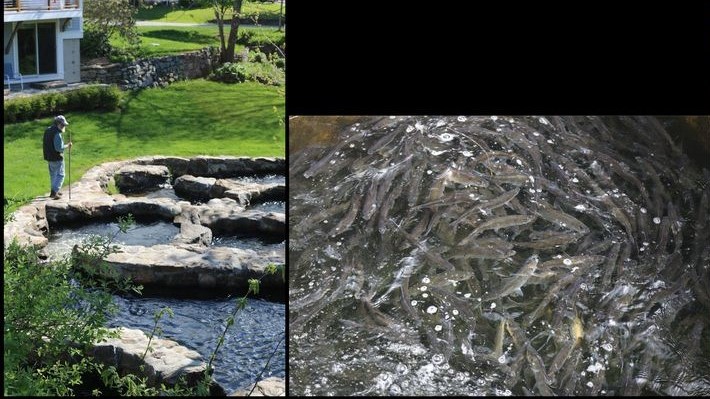Imagine you’re swimming in a competition. You have to swim in the opposite direction of a strong current, and part of the race is uphill. It would be a difficult race to finish, much less win. That is the situation faced every year by two species of fish, the alewife and the blueback herring.
These two species of fish are called river herring. River herring serve as an important food source to numerous other species, such as cod and tuna. They are small and silver, and their scales are shiny in the sunlight. Some are about the size of a cell phone, while others might grow as long as an adult-sized flip-flop.
Even though they live in the ocean for most of their lives, river herring travel to freshwater lakes to spawn, or lay their eggs. Instinct tells them to swim more than 100 miles. They travel from as far away as the coasts of the Carolinas, swimming all the way up to the streams and lakes of Maine. They travel together in groups called schools. These schools can include more than 10,000 fish, swimming against the current of the water for much of the way!
Over the years, fewer and fewer fish have succeeded in reaching the lakes. Dams built by people along the river herring’s route sometimes blocked their way. When the river herring began to disappear, so did the other fish and wildlife that used them as a food source.
The people of Damariscotta Mills, Maine, decided they wanted to help the river herring. Every year the people could see the fish swimming upstream, including a 42-foot climb up a stream to Damariscotta Lake. The town had a 200-year-old fish ladder that helped the fish make the climb. The people wanted to restore the ladder to make it better for the fish. A fish ladder isn’t like any ladder you may have seen before. It looks a lot like a stream, except it has a series of 68 small pools connected by ramp-like underwater hills and small waterfalls. The herring swim and jump up through these pools, eventually climbing up to the level of the lake.
To restore the ladder and make it easier for more fish to reach the lake, the townspeople added smooth, natural stone surfaces. This special stone protects the herring as they make the climb to the lake. Now, thanks to the improved fish ladder and other steps made along the herring’s route, hundreds of thousands of river herring make it to the lake every year!
The people of the town are happy that the fish like the improved ladder. As soon as the herring begin traveling up the ladder, crowds gather to welcome them back and watch them make the climb. The number of herring using the ladder peaks in May, which is when Damariscotta Mills holds its annual River Herring Festival. The festival is a great way to celebrate the fish and the people’s efforts to protect them. People from around the world travel to Damariscotta Mills to see the thousands of herring traveling up the ladder to the lake.
After the herring lay their eggs in the lake, they swim back downstream and travel back to the sea. A few months later, after the eggs have hatched and the young fish are ready, they also swim to the sea. When it is their time to lay eggs, they will also make the journey up the fish ladder to the lake.









